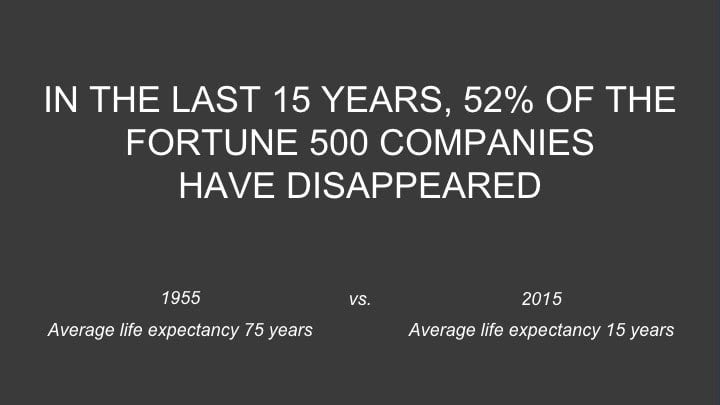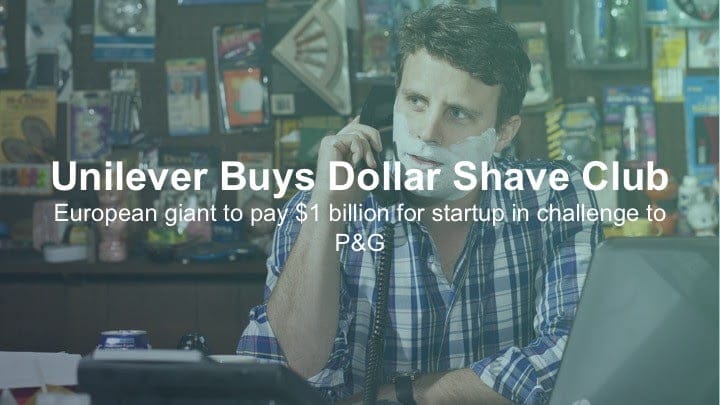When we think of a sales deck, we usually see it as a simple sales pitch, a product demonstration, or a set of data with figures and, although it incorporates these elements, it is more than the sum of its parts.
If done correctly and at the right time in your sales process, it has the potential to draw the attention of prospects and leave them very excited to move on with your product solution.
In this guide, we’ll walk you through the components of a customer-focused sales deck and how to use the power of a good story to drive decision-making and close more deals.
We will also discuss the key elements to include in your presentation and practical ideas on how to do this, with examples of what is currently working in 2021.
What is a Sales Deck?
When prospecting and follow-up efforts have paid off and your marketing team hands off a sales-ready lead, it is time for your sales team to close the deal.
Just because your lead is ready to buy, it does not necessarily mean they will, and this is where sales techniques come at hand to make your product offer a no-brainer for your prospect.
A sales pitch is what your sales team does daily, whether over the phone or in person with customers. It is almost automatic and designed to address the most common questions and objections that your clients present during a sales process.
A sales deck is an “extensive” format of a sales pitch. It is a more complex approach to closing deals. It involves a deep understanding of your buyer persona, including market statistics, facts, and figures aiming to help your prospect understand your solution and become a client.
Sales decks are specially structured when the customer has excellent buying potential or when the product or service is complex and requires a more detailed explanation. It is also a valuable resource when the company faces competition and needs to impress the potential customer.
To unlock revenue acceleration, you’ll need to make sure your marketing and sales teams are in complete alignment, allowing more complex information to be presented in a completely tailored approach solution. And this is what a sales deck is all about.
In the next section, we will explain how you can personalize your sales deck presentation.
Focus on solving the problem

A good customer-focused sales deck starts by presenting how your company understands your prospect industry problems and should not begin with the product solution.
By starting with the problem, you’ll enable your clients to understand how their journey will be to the point of solution implementation. You can do this by discussing the challenges that created your product solution in the first place.
Selling value is critical. It is essential to understand your buyers and adapt their journey according to what you can offer. Everything presented to a prospect must be specifically based on their value to them.
Your story must focus on change, not on the problem point, which must be adapted for the customer’s present. For example, a change in the company, industry, or technology used – Something that impacts and improves the way prospects do business.
If an element of your offer is not relevant, don’t distract it from what is essential. This will keep the prospects engaged and help build their story as a user.
-
12 Useful Sales Tips For Overcoming Customer Objections
Read more: 12 Useful Sales Tips For Overcoming Customer ObjectionsIt may be a hard truth but rejection is inevitable when it comes to sales.…
Storytelling and sales presentation
Storytelling is widely used as a marketing and sales technique. It can be understood as the process of telling stories in a structured way to engage a particular audience around specific business objectives.
Storytelling creates a robust identification between the prospect problems and your product solution, accelerating the buying journey and increasing conversion rates by 30%.
It is also 20 times easier for people to remember than a typical presentation of data, according to Jerome Bruner, an American psychologist who was a researcher at Harvard and Oxford Universities.
The other very important element of storytelling is the connection between the buyer’s emotional and rational side. People generally love to hear a compelling story and can be easily touched by its elements whenever they can identify themselves with it.
You can also incorporate storytelling to your sales pitch with a successful case study from a past client from a similar industry that went from “zero to hero” once they’ve adopted your product in x amount of time, for example.
Like any other sales technique, storytelling must be used without exaggeration and must be used in a planned, organized, and measurable way.
Talking about your product

You have outlined the problem and, if you are doing a good sales presentation (you can use an AI presentation maker), your audience starts giving signs of approval. It is essential to communicate in such a way that will build rapport and develop mutual trust between the parties.
At this exact moment, you can start talking about the solution.
That does not mean you should jump right into the benefits of your product. The best sales decks provide an overview of the customers’ experience when they start doing things differently, rather than focusing on the product itself.
How would the company change for the better? What impactful changes would occur? Also, how will this reduce costs and accelerate revenue?
You can talk about the solution and features that will enable this reality to be possible. A few examples may be:
- Presenting how your solution will help break down silos and improve internal processes.
- Explain how your product will solve your client’s pain points and current limitations.
- Comparing features with industry competitors.
- A combination of the above.
The components of a sales presentation
Now that we have discussed a sales deck’s narrative elements, what should you bring to the presentation itself? Most presentations include visual features, such as slides and for some products, and a live demonstration.
This part will explain what you can prepare and bring with you to leave your prospects speechless.
Slides presentation
Most sales presentations include slides to help address facts, figures, and statistics that support your presentation and help customers want to adopt your solution.
Before you start, gather information from your sales team and what the top customer’s objections are. If you’re not equipped with the right tools and knowledge to respond to sales rejections, your efforts may go to waste.
In a nutshell, the slides need to contain some key elements:
- A great opening slide: just like the story you use to open your presentation, the first slide should capture the audience’s attention.
- Data enrichment: The slides should help your clients visualize the company’s information and not just repeat what you are saying. You can obtain data from third parties or (if appropriate) from your own sales team.
- Testimonials from other clients: quotes or information from other clients, preferably from the same industry, will provide evidence of what you are presenting.
- Personalized content: innovative customizations are essential to draw the attention of your audience. It may be a good idea to find specifics about your prospect’s industry and how your product suits their specific needs.
- Final slide and next steps: your last slide should lead to action-taking, offering one or two steps for your prospects to move forward with.
Your team

In one of our previous articles, we discussed how sales and marketing alignment is crucial to write a case study, and the same applies here!
Gather your marketing and sales teams in a room and start identifying your best segments, noticing common backgrounds, demographics, and identifiers.
Whether alone or as a team, it is crucial to prepare in advance:
- Practice: getting the timing right is essential, especially if your presentation comprises many different parts. Practice each section to ensure your timing is sharp and in complete synchronicity with other team members.
- Make sure everything is working: you certainly don’t want to arrive at the presentation time and find out that the slides don’t work or that you have a problem with your product. Ensure everything is running correctly and going according to plan.
- Decide each one’s role: will one salesperson speak while the other will take care of the slides and demonstrate? Decide roles and responsibilities for the presentation in advance.
How to focus on the customer
It can be very tempting to create a presentation template and use it repeatedly, but remember that customization is essential in sales.
From the lead generation process to the sales conversion, you know that prospects are more interested in buying from you if your message is crafted just for them. It is the same during your entire sales deck, especially if you deal with companies in different areas.
Let’s say the marketing team typically uses your product, but the finance department has expressed interest in understanding how cost-effective your product will be.
You would not use slides with marketing-related elements during this presentation.
Instead, you would research pricing models, ask your production department to create a template or demo targeted for the finance team, and make your presentation around it.
Always seek to adapt your sales deck as per your audience’s challenges and opportunities. Best sales techniques require you to speak the clients’ language – and this means researching and preparing.
To create a customer-focused sales presentation, you need to attempt three things:
- Asking the right questions in advance to understand the customer’s needs.
- Get to know your product in-depth.
- Practice your sales presentation and gather feedback from your team.
Asking the right questions before creating your sales deck allows you to adjust it directly to the customer’s needs and proactively address their industry’s specific goals.
Learning everything possible about your product will ensure that you know it like the back of your hand, so you will hardly be caught off guard if you face some difficult questions.
Sales Deck done right
A good example of a customer-focused sales deck is Zuora, an IPO-bound Silicon Valley company that sells a SaaS platform for subscription billing.
In their sales deck, instead of starting by talking about the product, they began by presenting a relevant shift on what they refer to as a “subscription economy”.

By describing a big change in the world, Zuora intends to educate prospects with a timeline of events that led the industry to the current scenario as well as threats and opportunities at present.
Zuora’s continues by highlighting the extinction of 52% of the Fortune 500 companies:

And how the winners made the shift from product ownership to subscription billing:

The presentation is constantly warming prospects with market trends and social proof from industry leaders. At this point, prospects are convinced that the solution is adopting a subscription billing product:

It doesn’t necessarily mean that prospects are putting their hands in their pockets to close the deal, but it is definitely leading them to the right place.
Zuora presents the product features and finalizes with a client’s success story:

Even if you don’t have a success story, you can use this part to showcase your product with a live demonstration or a simple walk-through.
Another important thing to notice about Zuora’s strategy is team alignment.
The marketing team runs campaigns and branding around this shift to the subscription economy. The CEO (Tien Tzuo) leads the presentation and by the time the salesperson speaks, prospects are already convinced they have to act.
“It is the closest thing I’ve ever experienced to sales nirvana.” (Zuora’s salesperson)
What to do after a sales deck presentation?
At the end of the sales presentation, your customer should be ready to move forward with you. Make sure the next steps are clear:
- The offer of a product test
- The scheduling of a follow-up meeting, or
- The sending of a proposal
Whatever the next step, it must be well defined. If the customer does not respond after sending the proposal, anticipate the concerns and make sure you address them on a follow-up contact.
Conclusion
Using a standard sales deck may seem cost-effective, but it does not resonate with best practices to close more sales deals in 2021. If you want to make an impact, you need to make use of some smart customization.
A customer-focused sales deck should contain stories, data, demos, and more. This is the type of action that can show the strength of your product.
If done well, you will be able to keep all prospects engaged and willing to close the deal. If the presentation is not done well, you will have wasted everyone’s time, including yours.
Telling a story, proving your worth, and showing customers that they can change their company with your solution will make your presentation capture all interested parties’ attention.
Ready to start the path to Revenue Acceleration? Join our mailing list today and receive weekly tips to create your ideal customer-focused sales deck and much more!



